'Roger Penske expects his grandchildren to own this': IndyCar growing as it enters 2024
ST. PETERSBURG, Fla. – Right or wrong, Penske Entertainment president and CEO Mark Miles envisions the waving of Sunday afternoon’s green flag for the 2024 IndyCar season-opener as a magical moment set to cure IndyCar’s impassioned fanbase of its angst from a messy offseason.
It’s because he knows what his sport offers when fans can once again pack St. Pete’s city streets: a highly accessible, largely affordable professional racing series with exciting on-track action, paced by the Greatest Spectacle in Racing.
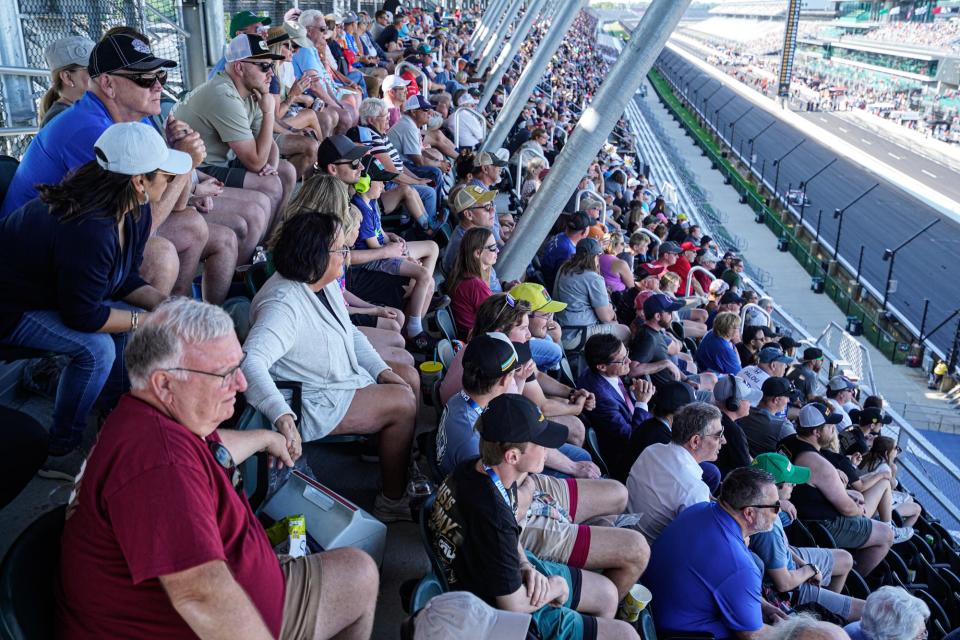
But when nearly all of IndyCar’s on-track running for six months involved private testing around it’s several-times-delayed hybrid system, attention shifted elsewhere.
Concerns were raised in September at the loss of Texas Motor Speedway – outside of the Indianapolis Motor Speedway, the longest-continuous stop on the schedule – from the 2024 slate.
Then production of the sport’s first video game in nearly 20 years was canceled. A month later, IndyCar’s pursuit of a new engine formula, nearly six years in the making, was delayed again.
And before the next season could launch, plans for IndyCar’s new much-ballyhooed finale running feet from Nashville’s honky-tonks on Broadway crumbled under a combination of overly ambitious plans, a lack of due diligence and a vision disconnected from reality.
Some answers and remedies have been found – Miles sees no reason IndyCar’s hybrid engine won’t launch this summer and pledges a return to Nashville’s downtown streets – but the disappointment lingers.
Disgruntled fans – and some team owners – see a trend of over-promising and under-delivering after years of delays around a new car and engine manufacturer.
The message of Penske Entertainment leadership and IndyCar’s measurables from a year ago paint a different picture; one of a sport picking up steam, driving double-digit growth in areas key to its present and future success.
“I don’t think we’re tone deaf,” Miles told a group of reporters in a preseason State of the Sport. “I understand people are looking to us for meteoric growth, and anything less than that can be disappointing for some, but I feel like we’re on a path for steady growth, and when you look at it in perspective, it’s meaningful growth.
“That doesn’t mean we’re not interested in accelerating our growth or making investments for (more) growth.”
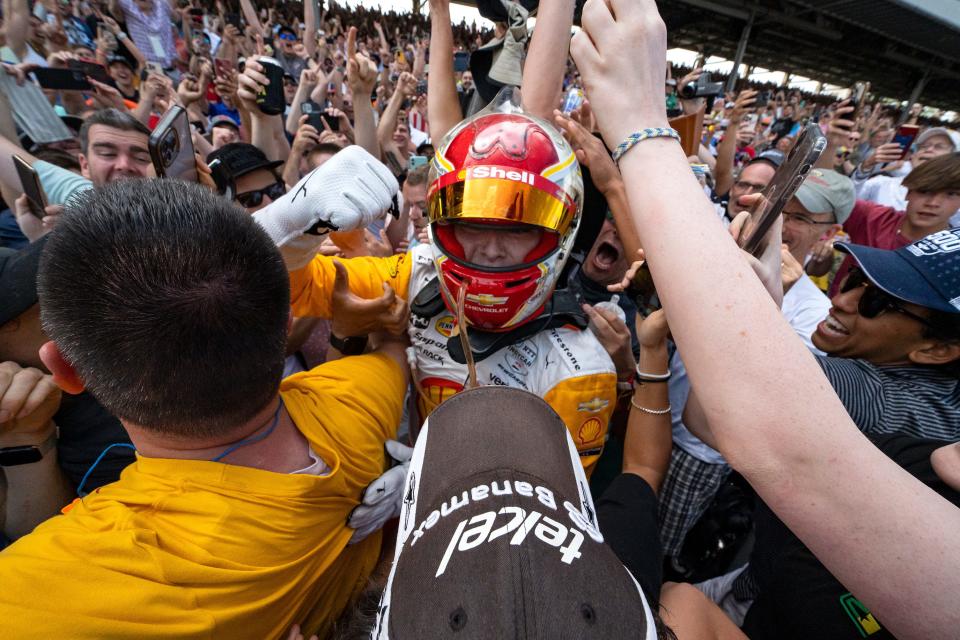
IndyCar’s growth in TV ratings, ticket sales, merchandise revenue and sponsors have the sport positioned to take a sizable leap in, among other things, its broadcast rights that are under negotiation. Upward trajectories in less-visible – but no less important – metrics like ‘fandom,’ digital engagement and audience age also point to a racing series undergoing change beneath the surface – perhaps even in spite of its string of public-facing PR messes.
“What we’re trying to continue to do is build on growth and avoid fads that may create spikes in growth that aren’t sustainable,” Miles told IndyStar in an exclusive follow-up interview last week, alluding to the American market bubble some Formula 1 detractors believe the sport is facing. “(Roger Penske) is in this for the long haul. His family is in this for the long haul.
“Roger isn’t looking to flip this. Roger Penske expects his grandchildren to own this.”
'I want to build a dynasty': How Gavin Ward is transforming Arrow McLaren's culture
IndyCar's 2023 metric successes
Spurred by an eight-figure infusion to its marketing budget a year ago, Miles boasted last week that IndyCar achieved the only year-over-year TV ratings growth among the U.S.’s three major motorsports series (including NASCAR and F1). Though it was just 2% up on 2022, the jump to 1,269,000 viewers on average across a race broadcast, compared to 925,000, registers as 37% growth over the last five years.
Over that same period, Miles said, NASCAR saw its average race viewership shrink; F1 saw rapid growth, too, though its numbers still sit a touch below IndyCar.
“Would we like to be up more than 2% year-over year? Sure,” Miles admitted. “But the mere fact of growth is not something we take for granted.”
IndyCar estimates race attendance was up roughly 24% for 2023, with all but two races seeing a meaningful increase. The sport’s merchandise revenue grew 26% – and 89% since 2021 – and its executives say it’s added 20 new brands since 2020, leading to 40% growth in sponsorship revenue over the last three years.
Much to the satisfaction of its teams, IndyCar has restored its Leaders Circle payments to the previous season’s top-22 entrants to just under $1.1 million – where it sat in 2022 before series leadership pulled $150,000 per car to increase its marketing for 2023.
And according to Miles, when combining the Indy 500 purse of more than $17 million, other race prize money and Leaders Circle payouts, teams receive more than 40% (but less than 50%) of total series revenues.
RLL focused on two things in 2024: Indy 500 recovery, extension for Christian Lundgaard
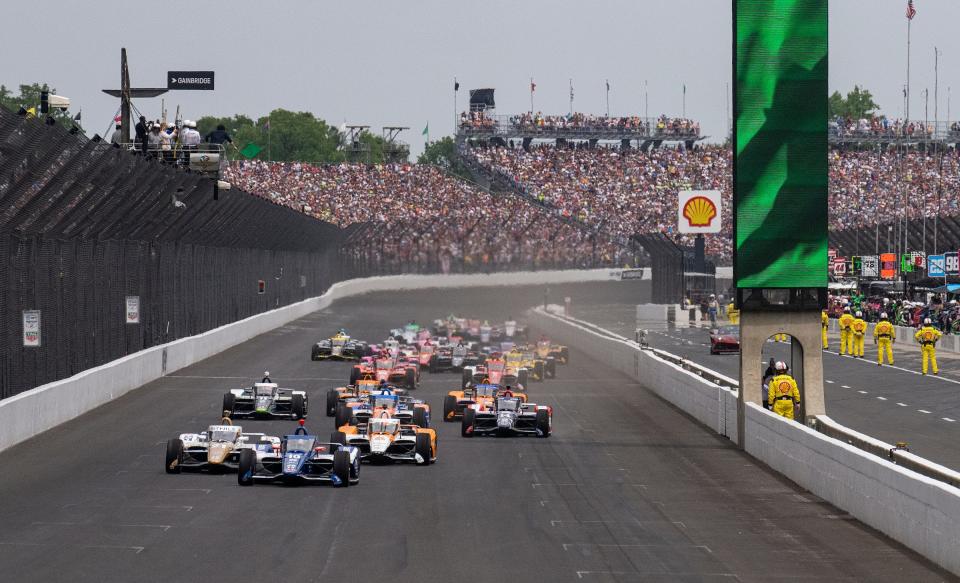
IndyCar refocusing advertising strategy in 2024
A year ago, IndyCar created unique driver-narrated 30-second promotional spots that had a level of production and pervasiveness not seen in IndyCar advertising in several years. But their effectiveness in actually driving audience was difficult to measure, Miles told IndyStar.
IndyCar shifted its marketing strategy two races into the 2023 season to more targeted and trackable advertising techniques on social media platforms, along with banner ads on mainstream media websites for its races on NBC’s platforms.
“The change allowed us to be more precise and also see how we were doing," Miles said.
In a slight tweak for 2024, Miles said a bulk of the sport’s digital advertising will be focused on race attendance – for example, reminding customers in central Florida in recent weeks that tickets for St. Pete are on-sale.
“We think that lifts the ‘whole’ more, if it’s less about the brand generically,” Miles said. “But it’s more about helping each of our events grow. I’d say that’s a definite shift from last year.”
Addition by subtraction: Has Andretti Global remade itself into an IndyCar title contender?
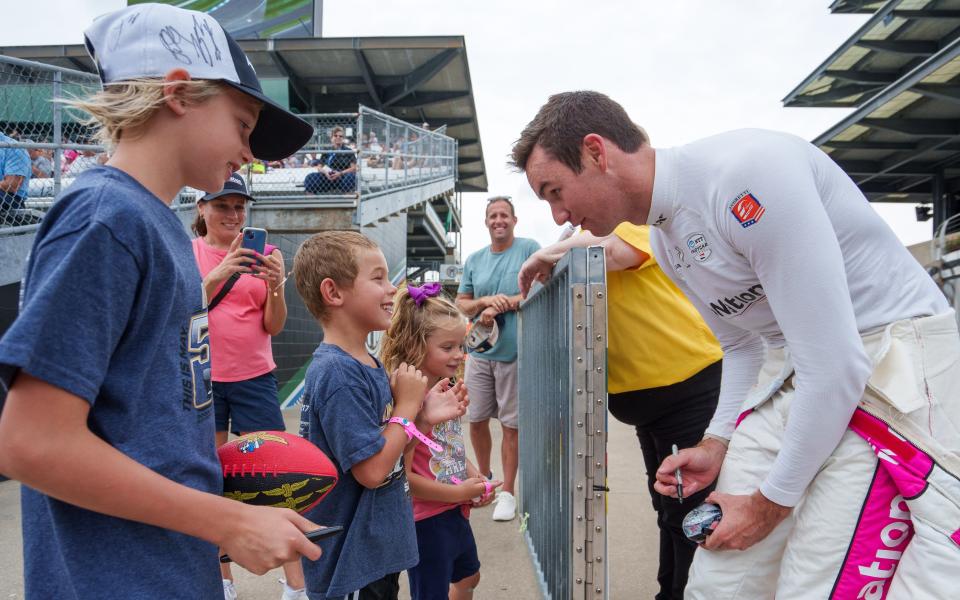
'That's something we're really proud of'
Penske Entertainment’s other major goal is building its driver lineup’s star-power.
This was a goal during IndyCar’s IZOD title-sponsor era via audacious TV commercials, then during the sport’s reality TV trend and as recently as 2022 through a more traditional season-long marketing campaign – the much-maligned ‘Defy Everything’ spots. The present plan is more subtle.
IndyCar race at St. Petersburg: TV, radio, practice, qualifying
Penske Entertainment vice president of corporate communications Alex Damron is pursuing varied, wide-ranging opportunities to place drivers at events and on media platforms with mainstream reach. Think ‘official guest’ at NBA and NFL games, sitting on panels at South-By-Southwest, taking part in the White House Easter Egg Roll, photo shoots and fashion events with GQ and the sport’s latest success: Christian Lundgaard’s ringside interview while at a UFC fight.
“It’s one thing to go somewhere and take one wire photo on the red carpet, but it’s another to go and get interviewed ringside, and then have that watched online 1.4 million times,” Damron told IndyStar.
In a similar vein, the series’ social media accounts have undergone a wholesale change in their posting frequency and the variability and uniqueness of the content. It’s one of the clearest ways, Penske Entertainment says, that it can see the age of its average fan starting to inch closer to the highly-sought demographic of 18-to-34 year-olds.
The series has one of the oldest TV fanbases, with 70% of the base over the age of 55 and just 5% aged 18-34, so IndyCar’s social media presence can only do so much. But officials say they have evidence their content is being consumed at a rapid clip:
>>On a network that for the last decade has heavily targeted the 18-34-year-old demographic with its drama and superhero-centric programming, more than half of last year’s audience on The CW that watched Season 1 of ‘100 Days to Indy’ came from what the network considers its ‘core demographic.’
>>More than 25% of that ‘100 Days’ audience tuned in to last year’s Indy 500, indicating that likely, a not-insignificant number of first-time fans watched because of the racing show they found themselves hooked on.
>>IndyCar’s social media engagement measures as high as it ever has, with data produced by ENDEAVOR, the series’ agency assisting in its media rights negotiations, saying the amount of engagement the sport’s social posts get, when compared to its follower count, exceeds that of the NFL, NASCAR and the NHL.
>>A separate metric crunched by ENDEAVOR says IndyCar’s ‘fandom’ – meaning the number of people in the U.S. who identify as a fan of IndyCar – has grown 20% since 2020.
“That’s something we’re really proud of,” Jonathan Gibson, Penske Corp. executive vice president of marketing and business development told IndyStar. “It shows that our content is quality, and it shows our fans are engaged.”
Added Damron: “Over the last 12 months, we’ve really looked at the (IndyCar) brand and tried to add some attributes to it that we think can help us reach a more digital and younger audience. We felt (our message) was too serious, going back a couple years ago, and we feel like we’ve learned how to collectively have fun with it, and I think it’s something our team has really enjoyed.”
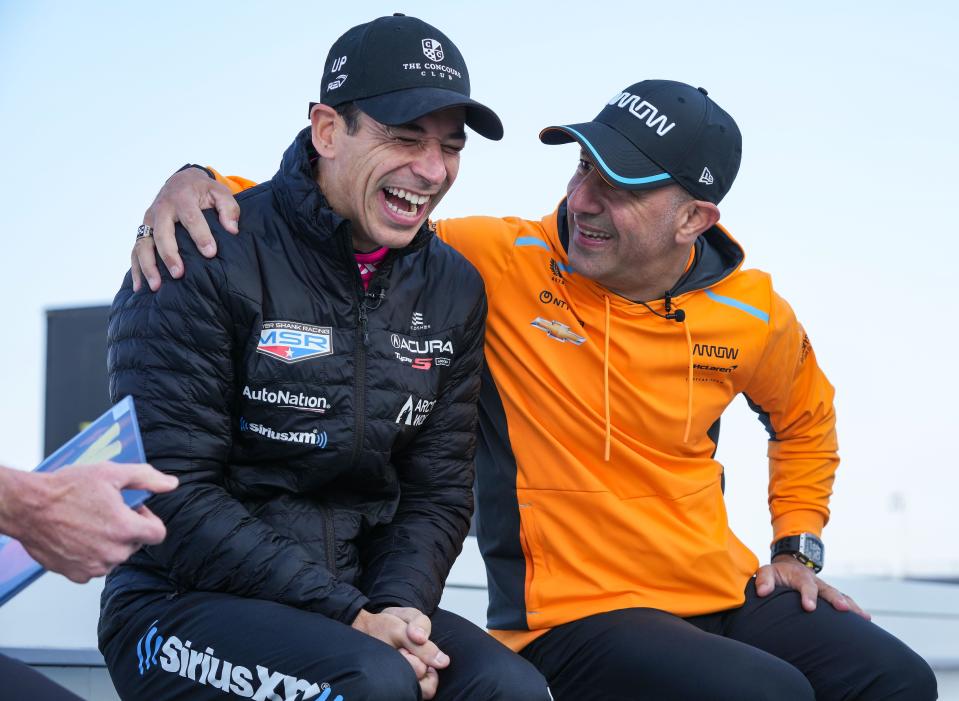
TV rights could come down to perceived future growth, age of fanbase
As IndyCar locks in on its four or five finalists in its media rights negotiations, Miles said interest is driven because of its growth overall as a sport, as well as the inroads it's made with a younger audience, even if the latter hasn’t yet made a sizable impact on IndyCar’s TV demographics.
F1's ability to capture the young adult fanbase in the U.S. likely plays a sizable role in why it hasn't surpassed IndyCar's average audience but has an annual American rights fee reported to be between $75 million-$90 million – more than three times IndyCar (estimated between $20 million to $25 million).
Should the series receive a sizable rights increase – a move that would likely only come in a split with six-year exclusive partner NBC – we may soon know just how positively media executives view IndyCar’s short-term potential.
“(Rights fees) aren’t just a matter of the proportions of audience and the (money),” said Miles, who expects to have those negotiations wrapped up by the 500. “It includes demographics. It includes growth, and (F1) has had very good growth – although you can talk to other experts on whether that’s expected to continue.
“But it’s about buzz, perceptions of momentum. It’s about the entertainment value and the hospitality value for a network – whether they want to entertain their clients. I think we’re aware of all of those factors, and we’re putting out best foot forward.”
This article originally appeared on Indianapolis Star: IndyCar: Why the series expects continued growth after rough offseason

